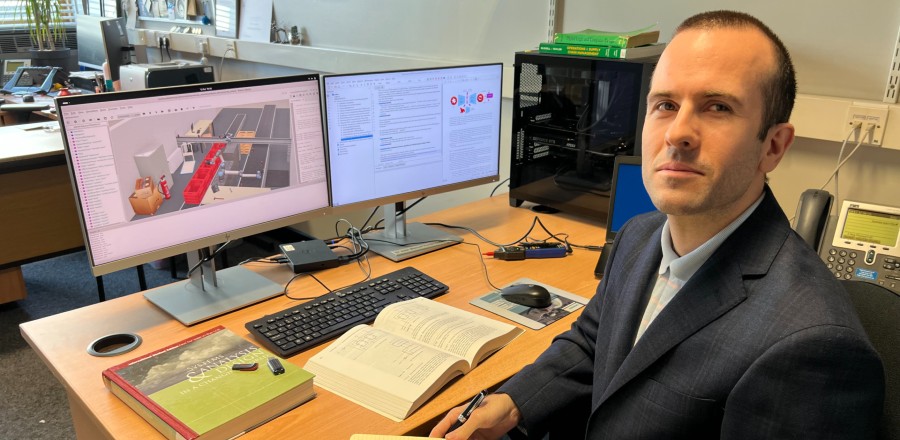Ground-breaking AI program could revolutionise drug discovery

A researcher at Glasgow Caledonian University has developed a computer program that swiftly identifies molecules that complement each other well – a breakthrough that could significantly accelerate future drug development.
Dr Juanma Parrilla, a robotics lecturer in the Department of Mechanical Engineering at Glasgow Caledonian University, collaborated with Professor Lee Cronin from the University of Glasgow, to create this innovative program.
It utilises advanced computational techniques to visualise the distribution of electrons around molecules and their interactions in three dimensions. With this detailed information, the program generates novel molecules that seamlessly fit together − a process likened to building a Lego set by Dr Parrilla.
Remarkably, the program operates without prior knowledge of specific molecules. Instead, it begins its analysis with the shape of one molecule and aims to identify another that harmoniously fits within it.
By evaluating molecular shapes and interactions, the program suggests potential molecular candidates for interaction. These suggestions are then subjected to laboratory testing by scientists to assess their effectiveness and viability.
Dr Parrilla explained: “Scientists have been intrigued by how molecules interact since the 1960s. Understanding their compatibility is crucial for developing new medicines or materials. However, finding the perfect match can be akin to finding a needle in a haystack.
“With our program, computers can assist us in discovering new guest molecules that complement the host, even with limited prior knowledge of the system. We've tested our method and successfully identified new guest molecules for both cucurbiturils and metal-organic cages. This could potentially streamline the process of finding useful molecules, thus saving time and money in scientific research, particularly in drug development.
“I focused on understanding molecules based on their shape and volume, rather than atoms. I developed a system that perceives molecules solely based on their appearance, similar to assembling Lego bricks. To achieve this, I trained a Variational Autoencoder using a dataset containing information on more than 130,000 molecules. This enabled my AI model to learn about molecules solely based on their volume.
“With this knowledge, I employed an optimisation algorithm to find the best-fitting volume for a given molecule. Initially, the algorithm explores random shapes, then refines them to find the best match, akin to moulding clay. Once the optimal volume is determined, I use another AI model called GPT to convert this volume representation into actual atoms. This step is vital for practical chemistry applications, as chemists require knowledge of the atoms present in a molecule to work effectively with it.”
The program (source code and data) is open source and available to the public, so anyone can use it. More information about this can be found in the research paper here.
